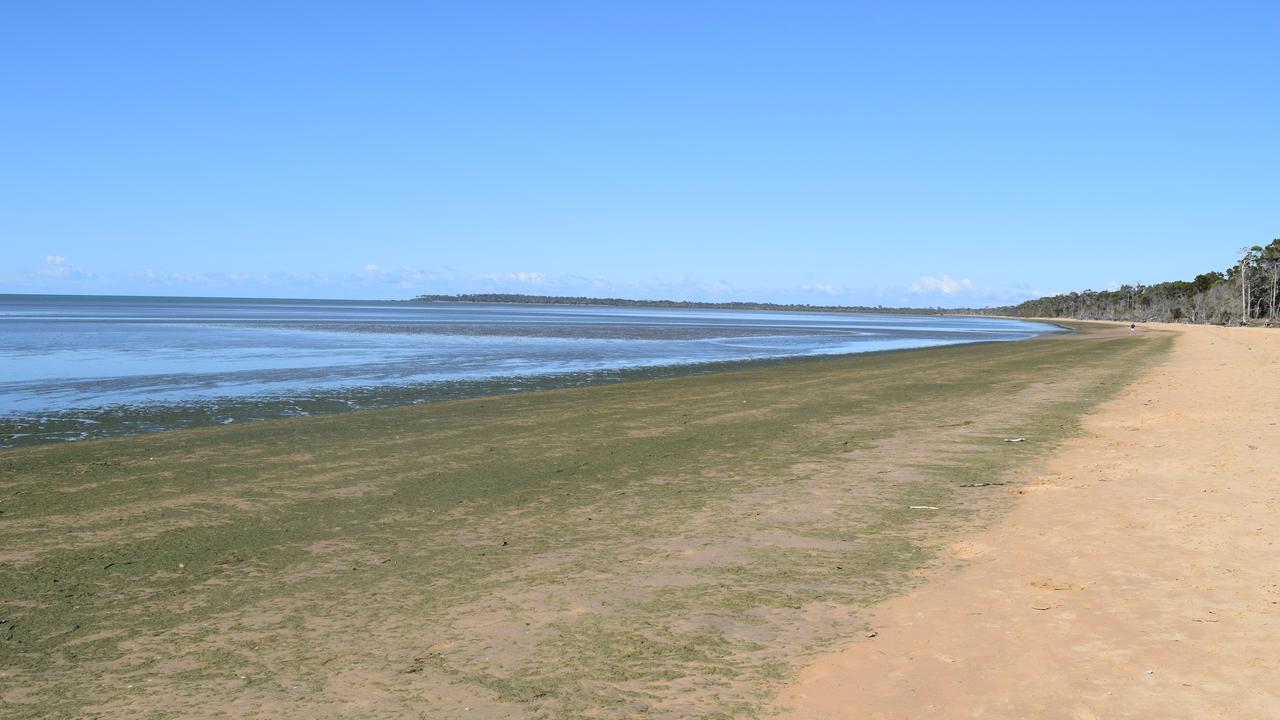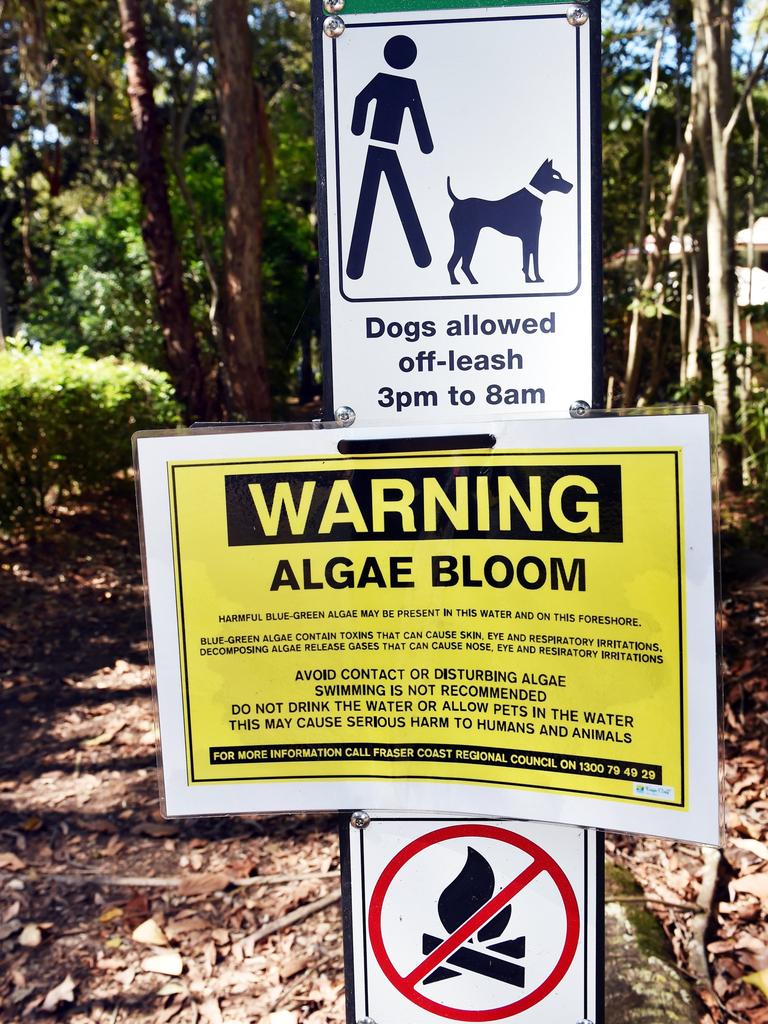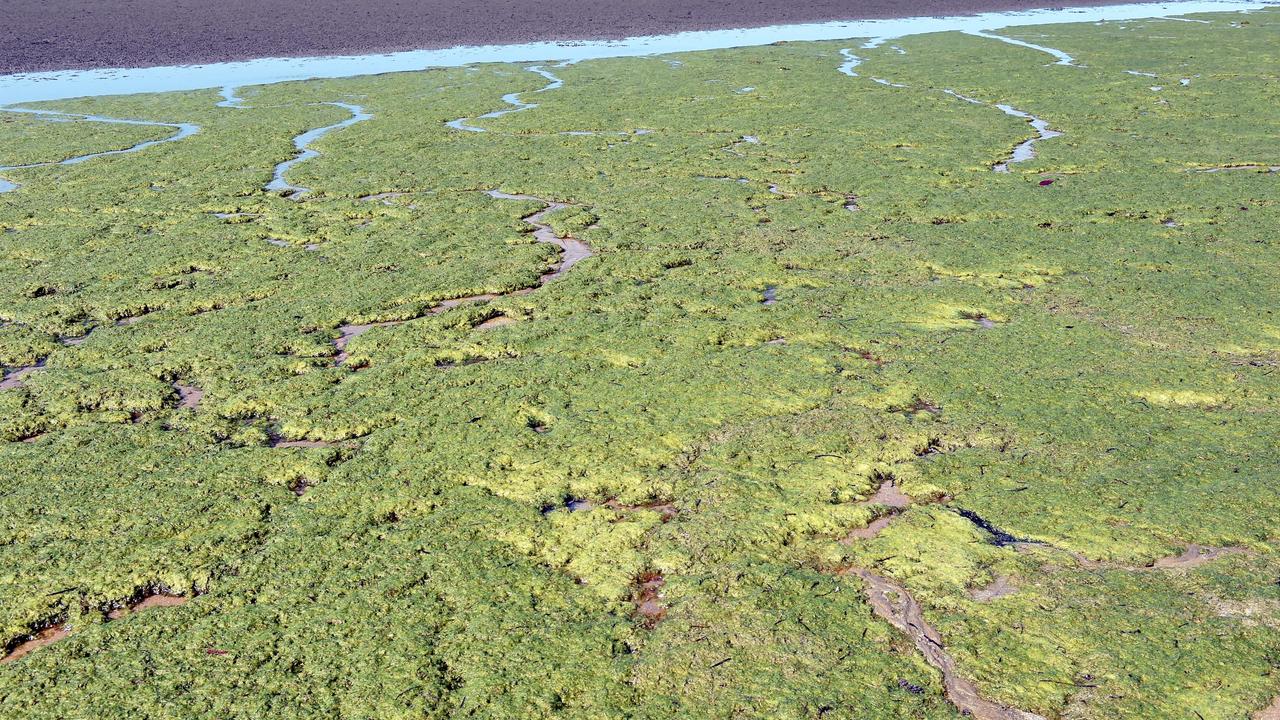Toxic algae discovered in popular recreational fishing spots in Hervey Bay
A study of harmful algal blooms in Hervey Bay has found the presence of some species that can cause fatal food poisoning, including some found in Australian waters for the first time.

Fraser Coast
Don't miss out on the headlines from Fraser Coast. Followed categories will be added to My News.
Researchers carrying out a study at Hervey Bay have discovered toxic algae species that can cause fatal food poisoning, including some found in Australian waters for the first time.
The peer-reviewed paper, published in Marine Pollution Bulletin, said the James Cook University study had investigated harmful algal blooms in Hervey Bay, a region known for its ecological uniqueness.
It was also known for its susceptibility to harmful algal blooms, the study read.
The research found 66 distinct genera, including known toxin producers such as Alexandrium, Gambierdiscus, Karenia and Prorocentrum, were present in Hervey Bay, with some toxic species detected in Australian waters for the first time.
“Additionally, we assessed the abundance of these toxic species and examined the influence of environmental factors on their occurrence,” the study read.
“This study emphasises the importance of ongoing monitoring and ecological assessments to manage harmful algal bloom impacts in vulnerable coastal areas such as Hervey Bay.”

Hervey Bay was the only known location on the east coast of Australia where ciguatera poisoning, caused by species from the genus Gambierdiscus, had been repeatedly reported, prompting strict fishing regulations within the bay for certain fish species, the study read.
“Additionally, large mixed algal blooms have resulted in beach closures due to their potential to cause skin and respiratory symptoms in humans,” it read.
That included concern over algae blooms at Dundowran Beach, as previously reported by the Chronicle.
“Despite these impacts, little research has been conducted on dinoflagellate communities in Hervey Bay,” the study read.
“’Therefore, revealing their diversity is crucial to fully understand their potential threat within the bay.”
Samples were collected from water, macro-algae, and sand at three different locations on the western coastline of Hervey Bay.
That included Pialba, Dayman Point and Burrum Heads, at the mouth of the Burrum River.
A total of 8,135,831 raw sequence reads were obtained from samples collected from the three sampling locations and three different substrates in Hervey Bay.
A total of 66 distinct genera of dinoflagellates were detected.
Of those, 15 species of toxic dinoflagellates were detected, some of which were recorded in Australian waters for the first time.
“Notably, species from the genera Alexandrium, Azadinium, and Amphidoma were among those newly detected in Australia, underscoring the threat these organisms pose to local marine ecosystems, human health and fisheries,” the study read.
Those species were known to cause shellfish poisoning.
“Their presence highlights the importance of ongoing monitoring and research to better understand and mitigate the risks associated with toxic dinoflagellates in Australia.”
All four Alexandrium species were detected at the Burrum Heads site, which is situated at the river mouth.

Concerns were raised over the detection of the harmful agal blooms in the region, which could impact on recreational fishing and the health of local marine life.
“It is crucial to prioritise further research on the toxins produced by these harmful dinoflagellates and their effects on these ecologically and culturally significant species,” the study read.
“By understanding these impacts, we can better inform management strategies aimed at preserving both marine biodiversity and public health in Hervey Bay.”
However, researchers said it was important to note the study only provided a snapshot of dinoflagellate diversity in Hervey Bay.
“Dinoflagellate populations can undergo significant changes due to seasonal variations and environmental shifts,” the study reads.
“Additionally, the abundance metrics presented in this study refer to sequencing reads rather than absolute cell counts, highlighting the need for future studies to investigate the correlation between read counts and actual cell abundance.
“Future research should build on these findings by incorporating temporal sampling to capture the dynamics of dinoflagellate communities over time and providing a more comprehensive understanding of their ecological patterns and responses to changing environmental conditions.
“While metabarcoding offers valuable insights into community composition, targeted assays may be more effective for monitoring specific toxic dinoflagellates once their presence is detected, allowing for sensitive and precise assessments of immediate issues.”
Originally published as Toxic algae discovered in popular recreational fishing spots in Hervey Bay








